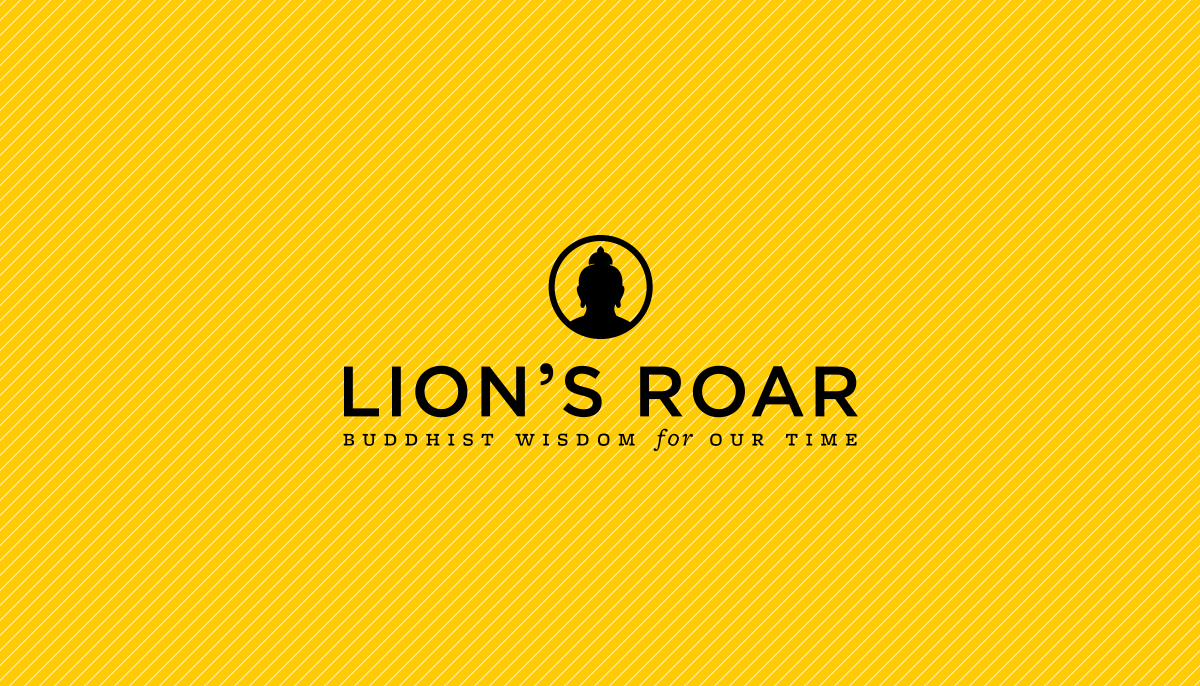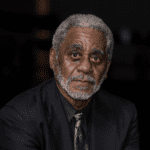The Geography of Thought: How Asians and Westerners Think Differently . . . and Why
By Richard E. Nisbett
Free Press; 288 pp., $15 (paper)
In one of the most fascinating, thought-provoking, and scientifically grounded books on cultural relativity in recent years, distinguished University of Michigan scholar Richard E. Nisbett explores the dramatically different thought processes of Westerners and East Asians. “Human cognition is not everywhere the same,” he states, for some people have used different conceptual tools to understand the world.
His detailed journey into this profound (and some might feel politically incorrect) realm of difference spans history, philosophy, psychology, geography, and linguistics. Naturally, his conclusions will be of special interest to Western converts to Buddhism and other Eastern spiritual practices. But as Nisbett shows through a wide range of studies, surveys, and observational research conducted by himself and his colleagues around the world, these two fundamentally different ways of conceiving and experiencing reality influence every aspect of our contemporary life—education, law, business, child-rearing and social relations—and account for much of the misunderstanding about behavior and expectations that arise between Easterners and Westerners.
Nisbett begins probing these worldviews that are at such variance with an historical overture of the ecological and philosophical foundations of thought in ancient Greece and China. Three characteristics are crucial hallmarks of Greek life 2,500 years ago, he says. First, “the location of the Greeks at the crossroads of the world” fed their sense of curiosity and brought this maritime trading people into contact with different cultures to such a degree that “Athens itself would have been rather like the bar in Star Wars.” Secondly, the Greeks “had a remarkable sense of personal agency—the sense that they were in charge of their own lives and free to act as they chose.” And lastly, “A strong sense of individual identity accompanied the Greek sense of personal agency.”
This sense of agency, says Nisbett, fueled a tradition of debate in the Greek city-state, or polis. Debate was a spirited contest between individuals, with all the contention, dichotomies, and conflict one might expect when “persuasion by dint of rational argument” is the rule. That belief in individualism and agency also led early Greek thinkers, like Aristotle, to be “deeply concerned with the question of which properties made an object what it was,” regardless of the context or field in which one might find it. “A routine habit of Greek philosophers,” Nisbett writes, “was to analyze the attributes of an object—person, place, thing, or animal—and categorize the object on the basis of its abstracted attributes.”
Categories are denoted by static, unchanging nouns (which Western children are taught as soon as they can talk), and this isolation of an object allowed it to be studied. Its unchanging, independent, static essence could be discovered, and none of this would have been possible without the logical principles of noncontradiction, which states that a proposition cannot be both truth and false (“A and not–A are impossible”), and the law of identity, in which a thing is itself and not some other thing (“A is A regardless of the context”). Moving forward as he sketches a capsule intellectual history of the West, Nisbett concludes that “the history of Europe…created a new sort of person—one who conceived of individuals as separate from the larger community and who thought in terms imbued with freedom.”
The ontology underlying Asian thought is significantly different. Nisbett argues that in contrast to the exposure the Greeks had to so many different people (and views), which led them to address contradiction in an either/or fashion, the Chinese were ethnically homogeneous and unified as a people early on. The author notes that “even today 95 percent of the Chinese population belongs to the same Han ethnic group.” While the Greeks cherished agency, argued with each other in the marketplace, debated in the political assembly (“a contest between opponents”), and thought of themselves “as individuals with distinct properties, as units separate from others,” the Chinese embraced harmony as their social ideal. “Every Chinese was first and foremost a member of a collective…the clan, the village, and especially the family. … For the early Confucians, there can be no me in isolation, to be considered abstractly: I am the totality of roles I live in relation to specific others.”
In other words, Asian ontology emphasized a sense of collective agency. Added to that, Confucianism, with its complex network of social roles and obligations, and its “Doctrine of the Golden Mean—to be excessive in nothing and to assume that between two propositions, and between two contending individuals, there is truth on both sides,” was compatible with two other great Eastern religions. One was Taoism, which teaches that “The Tao is conceived as both ‘is’ and ‘is not’ ”; that “Returning—moving in endless cycles—is the basic pattern of movement of the Tao”; and that opposites interpenetrate, as illustrated by the famous ying-yang symbol.
The other religion was Buddhism, with its principles of the Middle Way and pratitya samutpada, or dependent origination. The result of this fusion was that folk life reinforced a metaphysics (and vice versa) that gave priority to a “both/and” dialectical way of thinking, a sensitivity to interdependence, “the need to see things whole,” and “the mutual influence of everything on almost everything else.” Objects are not in opposition, nor are they static or unchanging. A person was “connected, fluid, and conditional” and not a “bounded, impermeable free agent.” Emphasis moves to the verb (becoming), not the noun (being).
For Easterners, close attention to relationships, attitudes, and the feelings of others gained in importance. Compromise and hostility resolution were highly valued. “There is a strong presumption that contradictions are merely apparent and to believe that ‘A is right and B is not wrong either.’ This stance is captured in the Zen Buddhist dictum that ‘the opposite of a great truth is also true.’” (Think of the dialectical logic of Nagarjuna and the Madhyamika school.) And rather than abstractions, “Chinese philosophers quite explicitly favored the more concrete sense impressions in understanding the world.” A wide-angle view that saw the background (field) was just as important as focusing on the figure.
Lest anyone might suspect that Nisbett is trafficking in sweeping oversimplifications of East and West, I can assure readers that his book is filled with subtlety and nuance. He readily acknowledges that “Independence vs. interdependence is of course not an either/or matter. Every society—and every individual—is a blend of both.” In his research, he finds “that it is the white Protestants among the American participants in our studies who show the most Western patterns of behavior and that Catholics and minority group members, including African Americans and Hispanics, are shifted somewhat toward Eastern patterns,” and also that continental Europeans are intermediate between East Asian and Anglo-American social attitudes and values.
But all this background is, says Nesbitt, just preparation for the heart of the book, which is contained in chapters four through seven. There, his studies confirm that “Westerners are the protagonists of their autobiographical novels; Asians are merely cast members in movies touching upon their lives.” When developmental psychologists Jessica Han, Michelle Leichtman, and Qi Wang studied four- to-six-year-old American and Chinese children, they found that “the proportion of self-references was more than three times higher for American children than for Chinese children. … American children made twice as many references to their own internal states, such as preferences and emotions, as did the Chinese children.” In short, for American kids: “Well, enough about you; let’s talk about me.”
Figure/ground differences were confirmed when students at Kyoto and Michigan Universities were twice shown an underwater vignette of fish swimming. Asked what they had seen, “American and Japanese made about an equal number of references to the focal fish, but the Japanese made more than 60 percent more references to background elements including the water, rocks, bubbles, and inert plants and animals.” Nisbett provides illustrations for this experiment and another of an airport site. Taking the test myself, I discovered to my astonishment just how many obvious background details my Western-conditioned perception failed to grasp.
Nesbitt’s research finds that these differences begin literally in the crib. He writes, “American mothers used twice as many object labels as Japanese mothers (‘piggie,’ ‘doggie’) and Japanese mothers engaged in twice as many social routines of teaching politeness norms (empathy and greetings, for example). An American mother’s patter might go like this: ‘That’s a car. See the car? You like it? It’s got nice wheels.’ A Japanese mother might say: ‘Here! It’s a vroom vroom. I give it to you. Now give this to me. Yes! Thank you.’ American children are learning that the world is mostly a place with objects, Japanese children that the world is mostly about relations.”
Predictably, these subtle differences can lead to a clash of cultures. “Westerners teach their children to communicate their ideas clearly and to adopt a ‘transmitter’ orientation,” Nisbett says, “that is, the speaker is responsible for uttering sentences that can be clearly understood by the hearer—and understood, in fact, more or less independently of the context. It’s the speaker’s fault if there is a miscommunication. Asians, in contrast, teach their children a ‘receiver’ orientation, meaning that it is the hearer’s responsibility to understand what is being said. …Westerners—and perhaps especially Americans—are apt to find Asians hard to read because Asians are likely to assume that their point has been made indirectly and with finesse… . (They) in turn, are apt to find Westerners—perhaps especially Americans—direct to the point of condescension or even rudeness.” Furthermore, Nisbett observes, “What is intrusive and dangerous in the East is considered a means for getting at the truth in the West. Westerners place an almost religious faith in the free marketplace of ideas.”
College professors such as myself occasionally see in the classroom the consequences of our aggressive, Western approach. The author includes a revealing story about Heejung Kim, a Korean graduate student at Stanford who “became exasperated with the constant demand of her American instructors that she speak up in class. She was told repeatedly that failure to speak up would be taken as an indication of failure to understand the material.” Kim put this problem to a test, having people speak out loud as they solved problems. What did her experiment find? “This had no effect on the performance of European Americans. But the requirement had very deleterious effects on the performance of Asians and Asian Americans.” Nisbett wonders, “Is it a form of ‘colonialism’ to demand that they perform verbally and share their thoughts with their classmates?”
Rich in examples, illustrations, empirical studies, and anecdotes, The Geography of Thought considers not only the differences today between East and West, but also whether there is evidence that these two cultural worlds are moving farther apart or converging. No one will see the world in quite the same way after reading it.

